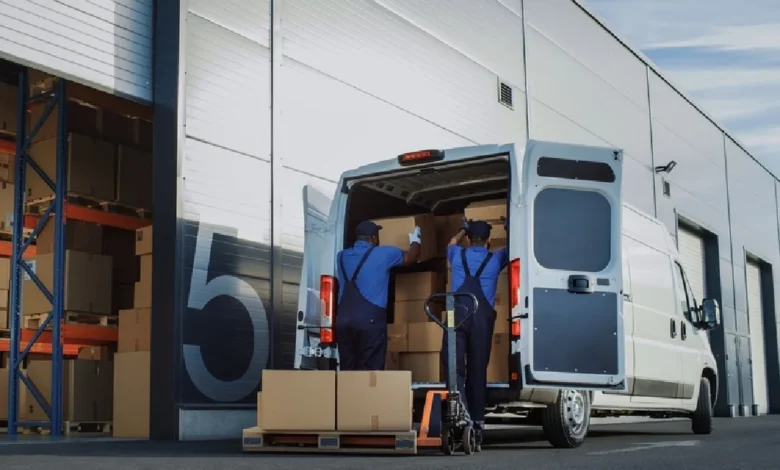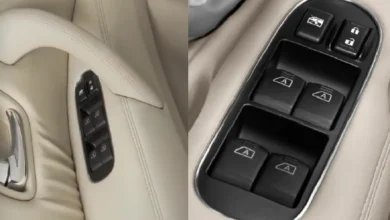
Transporting goods by car sounds simple, right? Until it’s not. Whether it’s moving furniture, shifting fragile items, or loading up for a big trip, something can always go wrong. From improperly secured items to overloaded vehicles, the risk of damage looms large. And it’s not just the goods at risk; your car’s safety and handling can also suffer when weight and balance aren’t considered. It can be frustrating, not knowing how to manage it all.
Imagine you’re in a hurry, with fragile or heavy items loaded in your vehicle, and one sharp turn sends them sliding across your trunk, risking serious damage. Or worse—overloaded goods cause handling issues, jeopardizing your safety and others on the road. Many overlook these risks until it’s too late. But there’s good news—these are avoidable problems with the right approach.
As Rena Monrovia says, “rena monrovia when you transport something by car”, whether it’s small, fragile goods or heavy equipment, you can do so securely and efficiently by following expert advice on vehicle preparation, load management, and driving adjustments. In this guide, we’ll walk you through the must-know strategies to keep your goods and your vehicle safe.
Rena Monrovia When You Transport Something by Car … Understanding the Risks
Before diving into practical tips, it’s crucial to understand why transporting goods by car can be tricky. Cars are primarily designed for passenger comfort, not for carrying heavy or irregularly shaped cargo. This leads to several common risks, such as:
- Improper weight distribution: When goods aren’t evenly spread out, it can affect vehicle balance and handling.
- Shifting cargo: Loose or unsecured items can move around during transit, leading to damage or accidents.
- Overloading: Exceeding your vehicle’s weight limit not only damages your suspension and tires but also reduces braking performance.
Now that we’ve touched on the problems, let’s explore the key strategies to avoid these pitfalls.
1. Preparing Your Car for Cargo Transport
The first step toward successful transport is preparing your vehicle. Whether you’re using a sedan, SUV, or truck, you need to make sure your car is ready for the job.

A. Inspect Your Vehicle’s Load Capacity
Every car has a specific weight limit. Check your vehicle’s manual to find out the gross vehicle weight rating (GVWR), which is the maximum weight your car can safely carry, including passengers, fuel, and cargo. Exceeding this limit compromises your car’s suspension, tires, and overall performance.
Additionally, check your vehicle for any abnormality like engine and brakes to start your journey. If you face some common car problems don’t worry this can be DIY sorted in very short time.
You might also like: Comprehensive Vehicle Maintenance and Repair
B. Clean Out Your Vehicle
Before loading anything, empty your car of unnecessary items. Clutter can make it difficult to properly arrange your cargo, and the extra weight could put more strain on your vehicle. Plus, having a clean space helps you visualize how best to load your goods.
C. Prepare the Right Tools and Accessories
To secure your cargo effectively, having the right tools is essential. Rena Monrovia recommends investing in:
- Cargo nets and straps: These helps secure your goods in place, preventing them from shifting.
- Protective padding: Use blankets or bubble wrap to cushion fragile items.
- Non-slip mats: Place these in the trunk or cargo area to stop items from sliding around.
2. Load Management: How to Arrange Cargo Safely
Now that your vehicle is prepped, it’s time to load the goods. The way you arrange items in your car is critical for both the safety of the cargo and the vehicle’s performance.
A. Heavy Items First
Always load the heaviest items first, placing them on the floor of your car, as close to the center of the vehicle as possible. This lowers the vehicle’s center of gravity, improving handling and preventing tipping in sharp turns.
B. Distribute the Weight Evenly
Make sure the weight is spread out evenly across the vehicle. Uneven weight distribution can make your car harder to control, especially in emergency situations. If you’re using a trailer or roof rack, ensure the load is balanced to avoid swaying or uneven pressure on the tires.
C. Secure the Cargo
Whether you’re carrying groceries or furniture, securing your load is essential. Use straps or cargo nets to tie down items, especially if you’re driving on highways or bumpy roads. A sudden stop or sharp turn can send unsecured goods flying, causing damage or even accidents.
D. Consider Fragile and Irregular Items
For fragile or odd-shaped items, extra care is needed. Wrap fragile goods in padding and place them in snug spots to limit movement. Use the non-slip mats to keep these items stable during the trip.
3. Driving Adjustments When Transporting Cargo
Even with perfectly loaded cargo, you’ll need to adjust your driving style to accommodate the extra weight and different handling of your vehicle.
A. Drive Slower and Brake Earlier
When your car is loaded with heavy goods, it takes longer to accelerate and brake. Keep extra distance between you and the car in front, and give yourself plenty of time to stop. When you transport something by car, advises reducing your speed, especially on winding roads or in wet conditions.
B. Avoid Sudden Maneuvers
Sharp turns or quick lane changes can cause your cargo to shift or your car to become unstable, especially if the load is heavy or improperly distributed. Make smooth, gradual movements to maintain control.
C. Check Your Tires Regularly
With additional weight, your tires are under more strain. Check your tire pressure before and after loading the vehicle. Under-inflated tires can overheat, while over-inflated tires are more prone to blowouts.
4. Using Additional Accessories for Larger Loads
Sometimes, your car’s cargo space just isn’t enough for everything you need to transport. In these cases, additional accessories like roof racks, trailers, and hitch-mounted carriers can help expand your capacity.
A. Roof Racks
If you’re using a roof rack, be sure to distribute the weight evenly and secure the load tightly. However, keep in mind that this raises your car’s center of gravity, making it more prone to rollovers. It’s crucial to drive slowly and carefully when transporting goods on the roof.
B. Trailers
For larger items or bulkier loads, a trailer may be the best option. When towing, make sure the trailer is properly attached and the load is balanced. Trailers affect braking and turning, so adjust your driving accordingly.
C. Hitch-Mounted Carriers
These carriers are ideal for smaller loads that don’t fit inside your vehicle. They keep items off the roof, lowering the car’s center of gravity. Just ensure that the carrier and load do not obstruct your rear view or license plate.
5. Legal and Safety Considerations
Transporting goods is not just about how you load them—it’s also important to comply with local laws and safety regulations.
A. Avoid Overloading
Besides damaging your car, overloading can result in fines if you exceed the legal weight limits for your vehicle. Check your state’s weight restrictions before hitting the road.
B. Ensure Clear Visibility
It’s illegal to obstruct your rearview or side mirrors with cargo. Make sure you have a clear line of sight before starting your journey.
C. Double-Check Your Insurance
Some items may not be covered by your standard auto insurance policy, especially if you’re transporting goods for business purposes. Check with your insurance provider to make sure you’re covered in case of damage or accidents.
Transporting Goods Securely with Rena Monrovia’s Expert Advice

Transporting goods by car can be challenging, but with the right preparation, careful loading, and safe driving techniques, you can avoid damage to your items and keep your vehicle running smoothly. Remember, when you transport something by car, advises focusing on balance, security, and driving adjustments to ensure a successful trip.
By following these expert tips, you’ll master the art of secure car transport and make your journeys safer, smoother, and worry-free.
We hope you found this article helpful. If you did, check out our blog for more great content like this.





